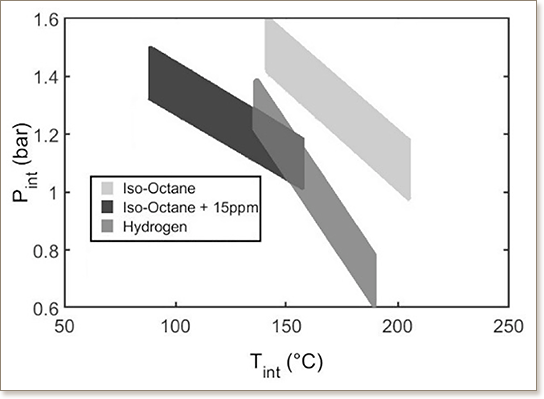Ozone-assisted combustion of hydrogen: A comparison with isooctane
N. Seignour, J. Masurier, B. Johansson, G. Dayma, P. Dagaut, F. Foucher
International Journal of Hydrogen Energy, 44(26), pp. 13953-13963, (2019)

Homogeneous Charge Compression Ignition (HCCI) engines have the potential to achieve low emissions of nitrogen oxides and particulate matter but the use of carbon-based fuels leads to significant emissions of carbon monoxide and unburned hydrocarbon which hinder the widespread development of HCCI. Nonetheless, HCCI engines have also the potential to use various types of fuel such as hydrogen, a carbon free fuel. The present study examined hydrogen combustion in an HCCI engine comparing hydrogen with isooctane. The sensitivities of CA05, CA50 and ringing intensity to intake pressure, intake temperature and ozone were investigated for both fuels. Results highlighted that hydrogen autoignites more easily than isooctane despite its higher-octane number. Ozone seeding was therefore used to shift the combustion region of isooctane in order to perform a viable comparison between the two fuels while starting with the same initial conditions. From this point, all of the three parameters were found to promote the HCCI combustion of both fuels but greater sensitivities were observed for hydrogen than for isooctane. Ozone was observed to have the strongest influence, making it a good strategy for a future control approach. The noise level of hydrogen was very high due its high reactivity. Finally, the use of hydrogen together with ozone should enable a very clean engine cycle to be achieved cycle with only water and nitrogen as engine-out emissions.